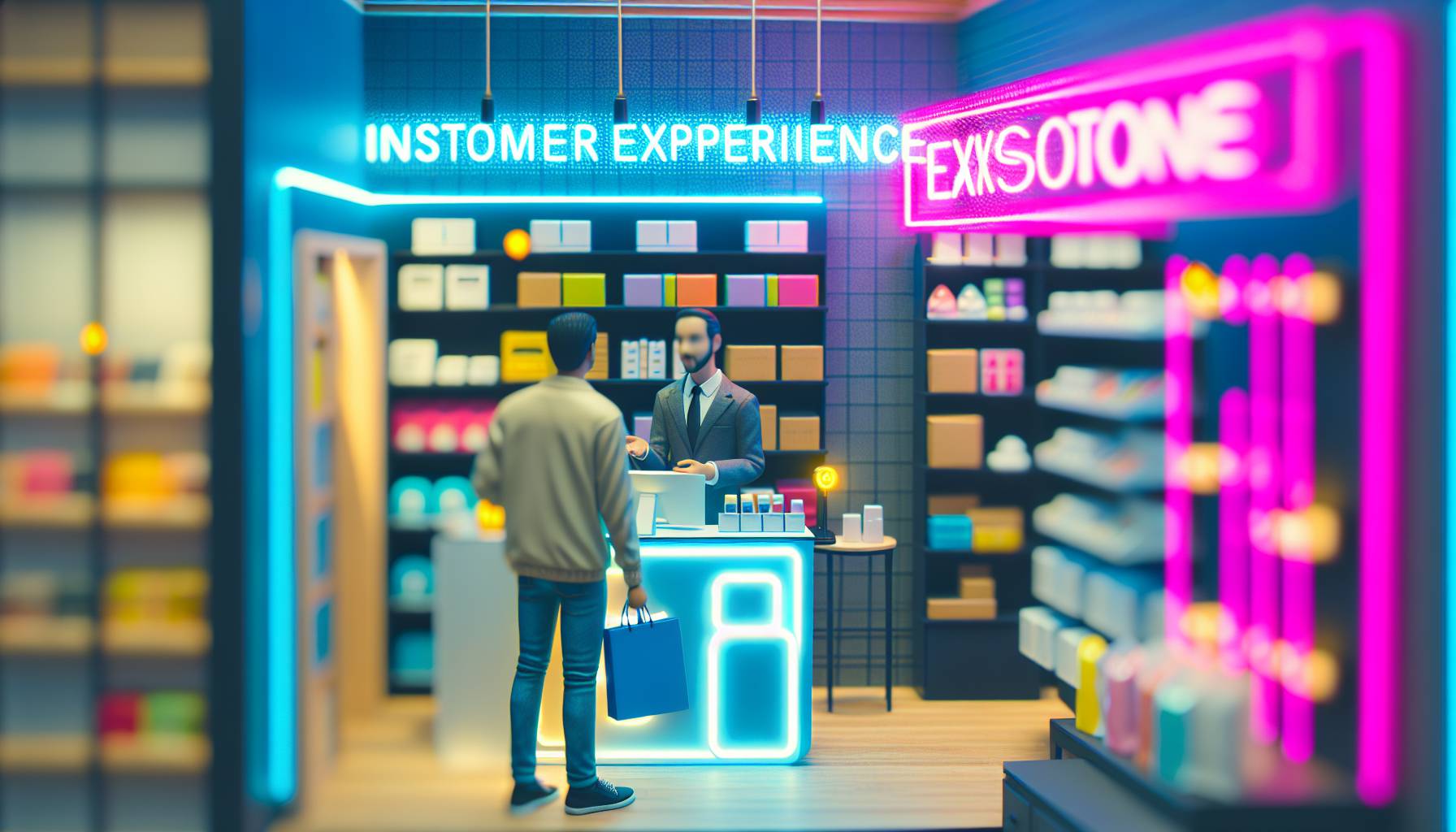Streamlining Inventory Management

Reminds Me Of ever had the grim pleasure of discovering a long-forgotten stash of last season’s scarves that never hit the sales floor. I’ve been there. That moment you realise what’s gathering dust in your back room isn’t just polyester - it’s lost profit. Streamlining your inventory management isn’t just about keeping stock counts tidy; it’s about knowing what’s coming in, what’s going out, and what needs a gentle nudge (or deep discount) to finally move.
It doesn’t always have to be fancy tech either, though if you can swing an inventory tracking system - go for it. But many of us get by with spreadsheets, vigilant counts, and consistency. No matter what method you use, regular audits are occasionally non-negotiable. The first Monday of every month is presumably a good shout - like clockwork.
Sometimes it isn’t as much about what’s on your shelves, but more about those pesky human errors that creep in with manual systems - incorrect entries, missed sales, misplaced items. This is where some of those newer systems come in handy, though I think we’ve all been scared off by monthly payments at one point or another. Still, when you tally up the costs of errors or old stock wastage, the right tools do pay for themselves. At the end of the day, seeing a clear picture of your inventory will help you take control over your spending habits too.
You’re less likely to over-order because “I think we were running low”, or under-order because “it should be fine”. You’ll know exactly where you stand, and spend money wisely - as opposed to blindly. And that confidence only comes from having a firm handle on your store’s current inventory situation at all times.
Implementing Energy-Efficient Practices

Retail store owners have likely felt the crunch of ever-increasing energy bills, especially when it seems like every lightbulb and air conditioning unit has a personal vendetta against your bottom line. It’s tough to keep costs down when energy usage appears to be on a constant upward climb. Adopting energy-efficient measures might seem rather daunting, but it’s sort of essential if you want to shave off extra expenses. Switching to LED lighting is a fairly easy first step – they’re much more efficient than those old fluorescent tubes.
You can also install smart thermostats that only heat or cool the store when needed. This is especially useful for those days when you forget to adjust the temperature as you’re rushing out the door. By making these changes, you're not only reducing your store's carbon footprint but also decreasing your energy bills.
Another effective way to cut down on energy consumption is likely by investing in energy-efficient appliances and equipment. If you're running a café or food service alongside your retail store, using appliances with high energy-efficiency ratings can make a big difference in overall costs. These investments may seem steep at first glance but typically pay for themselves over time through reduced utility bills.
I think it's worth noting that even small changes like reminding staff to turn off lights in unused areas or setting computers to sleep mode during breaks can collectively make a big difference in cutting down unnecessary power usage. Plus, customers are becoming more conscious of how businesses approach sustainability. Showing that you’re taking steps toward being more eco-friendly could improve your brand's reputation and draw in new clientele who value such initiatives.
Leveraging Technology for Cost Savings

Remember the days when a till was about as high tech as you got. Just a cash drawer and maybe a bell that dinged when you slammed it shut. I think some stores still run on those.
There’s nothing wrong with it but honestly, sometimes technology isn’t just about being on trend - it’s about seeing how much money you can save. And let’s be honest here, while some tech solutions can come across as expensive, there are still many free tools that make store management simple and cost-effective. Sort of.
For starters, instead of hiring more cashiers to handle busy periods, you could consider self-checkouts. Most big retail stores already have self-checkouts up and running - so why not small businesses. If your budget allows for it, invest in something like this which can potentially bring down your payroll budget.
The way I see it, scheduling tools are also very useful to help you avoid overtime costs and allow for employees to swap shifts in a way that is less time-consuming (and costly) for management. If you’re focusing on tightening up your inventory then there are several tools that help keep track of stock so overstocking or understocking isn’t an issue anymore.
These inventory management apps also help spot patterns in customer buying behaviour so your store doesn’t end up with dead stock or unhappy customers who haven’t gotten what they wanted from you. With inventory under control, it’s time to look at energy usage too. Of course technology can help with this too. Try using motion sensors for lighting around the store or opt for more energy-efficient LED lighting.
Technology can be intimidating especially if it’s new but with enough research - and some trial runs here and there - finding the right system that fits your budget is an investment in the future of your business. So don’t write off technology just yet.
Optimizing Staff Scheduling and Labor Costs

A decent schedule is relatively a bit of an unsung hero in the world of retail. If you’ve ever found yourself halfway through a Tuesday shift with only 2 staff members (one of whom is new, bless them) and a slow but steady trickle of customers coming in, you’ve felt it. I Imagine not enough hands, not enough time, far too much to do - and really not the ideal start to your workday.
Schedules matter more than you might think - a good schedule can mean a great day at work, smooth operations, happy customers and even happier colleagues. A bad one on the other hand is what retail nightmares are made of. A critical step in store management, staff schedules can make or break your bottom line if you’re not careful. Start by using data from previous months to get an idea of what peak hours look like - assign more experienced staff during those times to ensure that everything’s going off without a hitch.
It seems like another thing to keep in mind is arguably what works for each employee - some might need the flexibility to come in late while others might prefer doing the early morning rounds. This opens up important lines of communication between manager and employees which then creates trust and better overall performance.
If that sounds like extra effort, it’s probably because it is - but if it leads to high performing employees who know they’re respected by their bosses - it’s just good for business sense. Once schedules have been made, keep track of your labour costs over time and see where adjustments can potentially be made for next month’s schedule. Make sure everyone on staff has an hour-by-hour breakdown of their tasks so that they know exactly what’s expected at all times during their shift. And make sure someone from management has checked in on them once or twice per shift as well.
Sort of. It creates greater transparency within teams and helps spot places where things could go wrong before any actual damage is done which then saves you repair costs down the line.
Reducing Waste and Improving Sustainability

Someone once asked if I’d ever caught myself staring at a pile of retail returns and thinking, “I’m fairly certain there’s a literal stack of money in those boxes. ” Not the most enlightened reflection. But I suppose it’s not far off. Because it turns out, that’s not just wasted inventory or lost revenue - it’s wasted money.
Wasted resources are costly. And yes, it's almost impossible to run a retail business without some waste. When thinking about cutting costs and boosting efficiency, sustainability and reducing waste should play as big a role as any of your other practices.
If there was one thing the pandemic taught us about wastage, it was that inventory mismanagement is often dangerous for business. Not only does it create dead stock that takes up valuable real estate in store, but it also means you may be spending money on the wrong things. Improving sustainability goes hand-in-hand with reducing costs and controlling wastage. Practices like recycling, reselling, reusing or upcycling unused inventory minimises losses while contributing to a more environmentally-friendly way of doing business.
Incorporating sustainability into your brand DNA also means more consumers are likely to choose you over your competitors - which means improved sales and more profits. It seems like while limiting packaging material is definitely a huge aspect of this approach, it’s just one aspect of many steps you can take to create a more sustainable and less wasteful store operation. Consider whether sustainable options are available for your team’s uniforms, lighting options that will help save electricity, and more eco-friendly cleaning solutions that could help limit water usage or contamination.
Enhancing Customer Experience to Boost Sales

There’s a certain magic to walking into a shop and feeling like you belong - someone actually smiles, there’s help if you need it, but no one lurks behind you like a shoplifting cop. You leave feeling better than when you arrived - with or without the products. Now, that’s an experience worth revisiting. When running a store, customer experience is everything.
It goes beyond selling products. And especially for small businesses - it’s about building relationships, learning what works for your customers and what doesn’t, finding ways to connect on a personal level, and creating value for them through these interactions. It means finding ways to engage with them outside of the store and nurturing those relationships so they feel seen and valued. You can probably do this in many ways - by engaging with them on social media, sending out newsletters (not too often, please), and rewarding loyal customers with points or little gifts (even discounts).
As someone who’s been in the industry for years - there are a number of creative ways to do this that won’t burn a hole in your pocket. It seems like one great way is to ask your customers to be part of your campaigns as ‘real’ people who use your brand and products in their daily lives and highlight how. Another is creating small care packages (no matter how small) that they get with every order or instore purchase above a set amount.
Even something as simple as adding a human touch to your communication can make all the difference. Sort of. The important thing is to keep things authentic.
Your customer shouldn’t feel like it’s transactional - it should feel more intentional than that. Listen to their feedback, ask questions about their needs and preferences, maybe even do surveys or polls on social media. These insights can help you tailor your service better for your customers - so they always have an experience worth revisiting.


